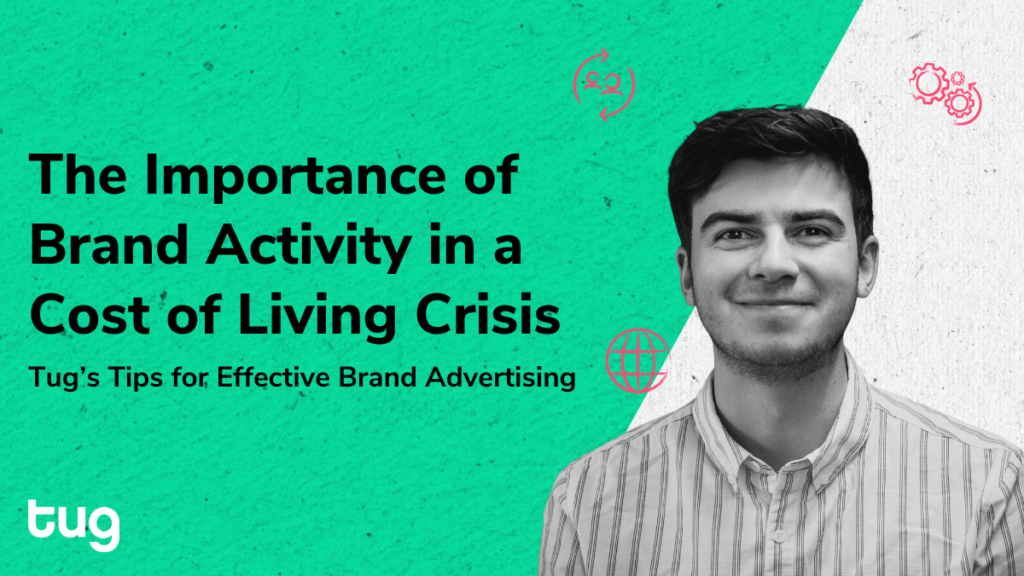
The Importance of Brand Activity in a Cost of Living Crisis
Recent statistics show that 6 out of 10 adults are spending less on non-essentials due to cost of living increases – and over 40% are spending less on essentials.1 Businesses will naturally spend less when customer spending reduces, and historically this has meant that brand marketing budgets have been on the chopping block. While businesses are understandably looking to drive direct results, here’s why cutting brand budget is not necessarily the right approach.
A third of UK consumers said they would be willing to change their brand preferences if one offers better value than the other.2 What’s more, two thirds of consumers are willing to spend more with companies that they trust, and studies show that brand trust and loyalty maintain a positive relationship with brand equity.3&4 Spending on brand activity can help build brand equity. Consumers are likely to spend more and become loyal to the brands that show stability and longevity.
Decreased brand activity often has long-term negative impacts on performance-led channels. Reduced upper funnel spend leads to reduced search around your brand. This results in a decline of impressions on PPC for brand terms. Brand activity also drives traffic through to the site, so less of it could ultimately deplete your known audience pools of prospective customers. Although this will not have an immediate measurable impact, this will diminish retargeting capabilities and slow down future-proofing efforts for a cookieless web.
A study shows that in the last recession, 60% of brands that increased their investment in media saw ROI improvements.5 Those that increased their paid advertising also saw a 17% rise in incremental sales.5 However, those that reduced spend risked losing 15% of their business to competitors that increased theirs.5
Tug’s Tips for Effective Brand Advertising During a Cost of Living Crisis
Reduced marketing budgets, especially for brand, are common. However, there are a few things to consider that can help you become more effective and efficient with your budget.
Understanding your customers’ behaviours – Global changes will have an impact on who interacts with your brand, and how they interact with it. The reason new customers need your company’s product might differ to your traditional customer. Statistics show that 66% of customers expect companies to understand their unique needs and expectations, and 70% of consumers say that how well a company understands their needs impacts their loyalty.6 Analysis of on-site activity will help identify who new demographics are, what their needs are and how you can help them.
Reach new customers with a unique strategy – The channels previously used for your core target audience might not resonate in the same way with new potential customers. A new strategy and new tactics should be established to reach this audience, with a ‘test and learn’ approach imperative to success.
Focus on the messaging – With a new audience pool, a strong brand identity and proposition is vital. Once this is established, personalisation and displaying the right ad to the right audience can help not only drive brand equity, loyalty and trust, but can also drive success in direct results – with 90% of consumers finding personalisation in marketing appealing.7
Early signs are showing a return to normality, where spending increases not only for brands but for consumers as well. Acting now on brand is important to ensure you are the number one consideration when a potential customer is in the buying stage.
Sources:
- Office for National Statistics, ‘Cost of living insights: spending’ – https://www.ons.gov.uk/economy/inflationandpriceindices/articles/costoflivinginsights/spending
- Sitecore, ‘Brand Authenticity’ – https://www.sitecore.com/brand-authenticity/united-kingdom
- The Institute of Customer Service, ‘Trust is key to maintaining customer spending through the cost of living crisis’ – https://www.instituteofcustomerservice.com/trust-pr/
- Emerald insight, ‘Does Brand Trust Matter to Brand Equity?’ – https://www.emerald.com/insight/content/doi/10.1108/10610420510601058/full/html
- Analytic Partners, ‘Marketers who cut spend risk losing 15% of their revenue during a recession’ – https://analyticpartners.com/newsroom/report-cutting-spend-in-recession-risks-loss/
- Salesforce, ‘What Are Customer Expectations, and How Have They Changed?’ – https://www.salesforce.com/resources/articles/customer-expectations/?sfdc-redirect=369
- Epsilon, ‘The power of me: The impact of personalization on marketing performance’ – https://www.slideshare.net/EpsilonMktg/the-power-of-me-the-impact-of-personalization-on-marketing-performance#1


